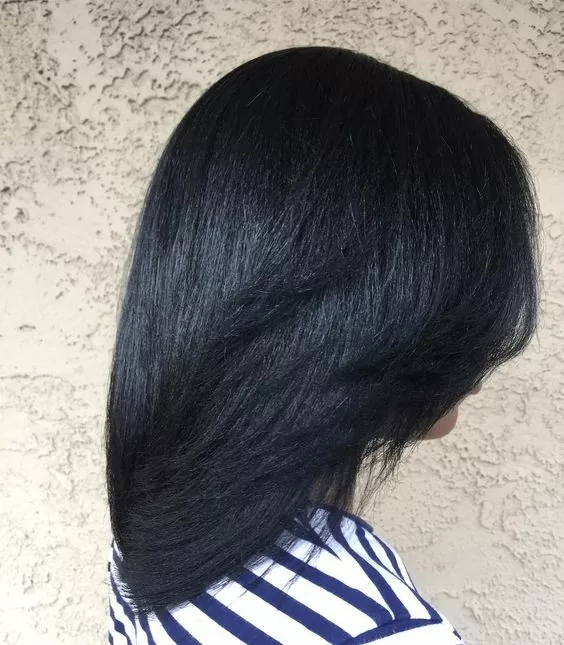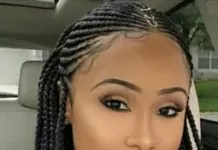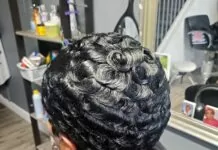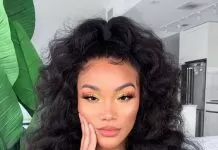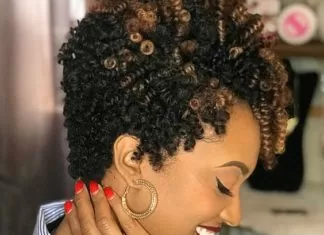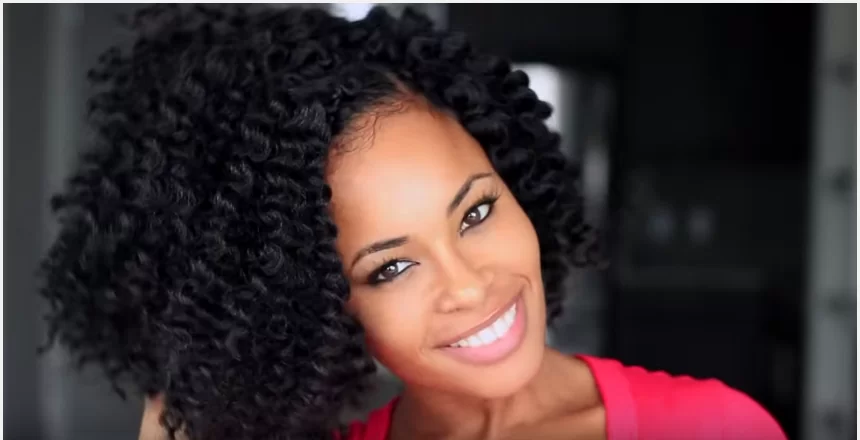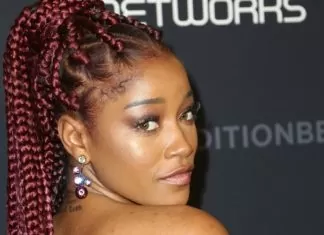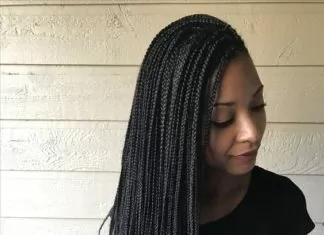Relaxer Hair Care Tips: How To Maintain Relaxed Hair
Having relaxed hair has its advantages and disadvantages. Some women find that relaxed hair takes less time and effort to maintain than natural hair. However, because chemical relaxers break down the bonds in naturally kinky and curly hair, they make the hair more prone to breakage and damage. Although relaxed hair can be more vulnerable, the right hair care routine can make a huge difference in the health of your hair. Here are some ways you can take care of and maintain relaxed hair.
1See A Relaxer Hair Professional
While applying a relaxer at home can be much more convenient and inexpensive, it’s always best to get your hair relaxed by a trusted professional stylist who cares about your hair’s health. A stylist is able to see every section of your hair, particularly the back of your head, which you are unable to see yourself. Stylists are trained to properly apply relaxers to the hair and can apply and distribute the relaxer quickly and effectively, ensuring that it’s not left on your hair longer than instructed. A relaxer that is left on the hair longer than intended can lead to over processing, breakage, and damage. A stylist can also gauge which formula is best for your hair: mild, regular or super. Try to stretch the time between touch-ups as much as possible by waiting at least 8 weeks between applications.
2Washing & Conditioning
It’s important to shampoo and deep condition your hair regularly in between relaxer touch-ups. Many ladies wash their hair once a week or every two weeks. Some people find they need to shampoo more often than others. Do what’s best for your hair. If your hair tangles a lot while washing, section it into four sections and shampoo and condition one section at a time, gently finger detangling while your hair is covered in conditioner. Shampoos that contain sulfates strip the hair of moisture; fortunately, there are many sulfate-free shampoos available that are much more gentle on the hair. If you need to use a sulfate shampoo to clarify your hair, use it sparingly and make sure you deep condition afterward to restore moisture. Conditioning after every shampoo is an important step that will help keep your hair moisturized and prevent breakage.
3Protein Treatments
In addition to deep conditioning, regular protein treatments can also help maintain relaxed hair. Relaxers break down the bonds in your hair as they straighten your hair. This can leave gaps in your hair cuticles; protein treatments help temporarily fill in those gaps and strengthen your hair. A mild protein treatment every couple of weeks is sufficient for most ladies with relaxed hair. If you are experiencing a great deal of breakage, a more intense protein treatment may be necessary. The use of protein treatments is a highly debated topic. How much protein your hair can tolerate will vary from person to person. In general, it’s ideal for your hair to maintain an optimal protein-moisture balance. Be sure to do your own research and consult with your stylist.
4Hot Oil Treatments For Relaxed Hair
In addition to regular deep conditioning treatments, a hot oil treatment can help relieve dry hair. Hot oil treatments are also very easy to do at home. Just heat up an oil of your choice by pouring it into a glass or heat-safe container and placing it in a pot of hot water for two minutes. Test the oil before applying to your hair and scalp to ensure that it’s not too hot. After applying the oil, cover your hair with a plastic cap and leave it on for 30 minutes. Shampoo and condition as usual. Some popular oils for hot oil treatments include olive oil, coconut oil, castor oil, grapeseed oil, and Jojoba oil.
5Co-Wash and Moisturizing Relaxed Hair
Cowashing is popular among women with naturally curly and kinky hair, but it can be beneficial for relaxed hair too. Cowashing shouldn’t completely replace shampoo in your routine, because shampoo is more effective at removing product build-up, but alternating between shampoo and cleansing conditioners can help keep your hair moisturized. A good moisturizer is also an essential part of a healthy relaxed hair routine. Shea Moisture’s Jamaican Black Castor Oil Strengthen & Grow Leave-In Conditioner is a popular moisturizer that works on both relaxed and natural hair. Jamaican Black Castor Oil is known to strengthen hair and help promote hair growth and length retention.
6Reduce Heat When Relaxing Hair
Excessive heat styling can wreak havoc on hair that’s already weakened by a chemical process like a relaxer. Reduce the amount of heat you use on your hair by air drying your hair before you style instead of blow drying. You can also do a roller set and sit under a hooded or soft bonnet dryer, both of which provide indirect heat which is much more gentle on your hair and ideal for setting styles. Roller set hair also has more body and bounce, so this method serves two purposes. If you do decide to use heat on your hair, be sure to apply a heat protectant first and work in small sections when blow drying and/or flat ironing your hair. Keep the temperature as low as possible. It generally requires much less heat and effort to get sleek results on relaxed hair than natural hair.
7Keep Your Ends Trimmed
The ends of your hair are the oldest and usually the most vulnerable part of your hair. Even with the most meticulous hair care routine and gentle handling, split/damaged ends are usually inevitable. While there are many products that claim to reverse damage and repair split ends, the only way to really get rid of them is to cut them off. Be sure to examine your ends regularly and trim when needed. Waiting to trim damaged ends will only lead to more damage; split ends sometimes travel up the length of the hair before breaking off. Small trims here and there will eliminate the need for drastic cuts later on down the line.
8Low-Manipulation Styling
Another way to maintain healthy relaxed hair is to incorporate low-manipulation styling into your routine because constant combing, brushing and handling can lead to breakage. Low-manipulation styles eliminate the need to restyle your hair every day. Some examples include rod sets, buns, ponytails, and updos. When properly preserved overnight, these styles allow you to get up and go in the morning, making low-manipulation styling helpful to your hair’s health and incredibly convenient.
9Protective Styling
Protective styling is another helpful way to give your hair a break from daily styling. Some examples of protective styles include wigs, weaves, and braids. Generally, any style that keeps the ends of your hair tucked away and protected can qualify as a protective style. Be careful not to leave a protective style in for too long, as it can result in excessive tangling during takedown. Don’t neglect your hair while it’s in a protective style; make sure you keep your real hair and scalp clean. It’s also important to give your hair a break in between protective styles. Too much protective styling (or styles that are too tight) can actually be counterproductive because they can cause too much tension on the hair, making it susceptible to breakage.
10Protect Your Relaxed Hair At Night
Cotton sheets and pillow cases can rub against your hair and cause breakage and strip your hair of moisture. Covering your hair with a satin or silk bonnet or scarf at night will help preserve your style overnight and protect your hair from breakage. If you are wearing your hair down, you can wrap it around your head in a circular motion and secure with large bobby pins before covering with a scarf or bonnet. You can also put your hair into Bantu knots if you find them comfortable to sleep in.
11Working Out With Relaxed Hair
Don’t let your hair get in the way of a healthy, active lifestyle. Ponytails and buns are the best styles to wear when working out. Tying down your hair with a satin scarf can also help preserve your hair, particularly your edges. If you sweat a lot while working out, you can do a quick cowash after your workout and air dry while your hair is in large braids for a low-maintenance post-workout routine. Some ladies find that a product like Nicole Ari Parker’s Save Your Do GymWrap is helpful for preserving relaxed hair while working out. This head wrap is made with breathable moisture-wicking material and helps keep your edges flat while you workout. This can be especially helpful if you have short hair and are unable to put it in a ponytail or bun.
12Eating Right For a Healthy Relaxed Hair
Diet is a big part of a healthy hair routine that is often overlooked. A healthy body is more likely to produce healthy hair. Drink lots of water and try to avoid processed foods and sugary drinks. Instead, fill your plate with lots of fresh fruits and vegetables and lean proteins. Hair vitamins are not a necessity, but if you’re worried you’re not getting all the vitamins and minerals you need, a simple multivitamin can be beneficial to your overall health. Consult your physician before taking any supplements.
13Relaxer Hair – The Take-Away
While there is alway a risk of damage with any chemical process, the right precautions before the applications and the right maintenance routine afterward can make all the difference. The right hair practices will help you avoid breakage and retain moisture, which will significantly affect the length, fullness and overall health of your hair.

